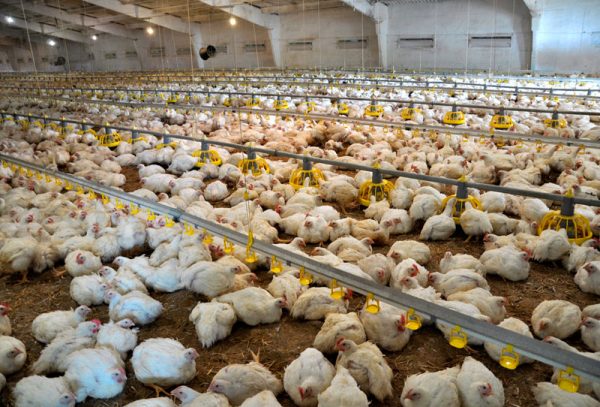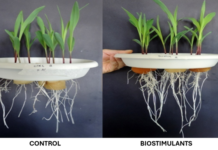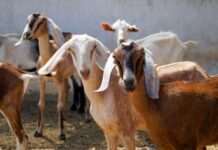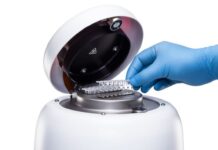Heat stress in broilers can be defined as the result of metabolic, hormonal, and immune system changes suffered by the birds when they are unable to dissipate sufficient body heat to the environment due to unsuitable conditions. Increases in environmental temperature and relative humidity are key components in this phenomenon. Broilers need different environmental temperatures at different ages to maximize their natural potential for growth but, in general, environmental temperatures of over 25 °C from three weeks of age start to make it difficult for the birds to dissipate excess heat.According to the research available, temperatures above 18–19 °C cause a broiler’s metabolic rate to start to fall to maintain a stable body temperature.
Both feed intake and production of thyroid hormones that accelerate metabolism decrease in broilers during periods of heat stress, to reduce body heat production. Blood that usually circulates through the bird’s organs is also diverted to areas near to the skin to dissipate the excess heat. Intestinal integrity is weakened because there is not enough energy to produce the proteins that form the tight junctions between the enterocytes during this stage of the process. This enables enteropathogenic bacteria to translocate from the gut lumen to the blood systemic system, making infections more likely.
The broiler also produces corticosteroids in an attempt to reduce inflammation, and immune suppression occurs. Finally, the bird starts to use protein and energy from the diet to produce substances involved in the immune system, causing decrease of feed efficiency.
Broilers dissipate heat to the environment through conduction, radiation, convection, and evaporation. At temperatures above 28 °C, the main mechanism available to the bird to dissipate heat is evaporation through panting. However, this mechanism increases CO2 loss, reducing the bird’s buffering capacity. This situation will cause bird mortality if it lasts for a prolonged period. Symptoms shown by heat-stressed broilers are rapid respiration rate, and an increase in body temperature of about 2 °C above usual temperatures.
Mortality increases during periods of heat stress on farms with non-automated ventilation, and weight gain and feed efficiency both decrease. Modern, automated climate-controlled farms have helped reduce the problem of mortality during heat stress periods, but reductions in average daily gain and feed efficiency are still observed.
In Spain, the reduction in average daily gain experienced in summer has been found to be very similar whichever ventilation system is used.
One of the most useful mechanisms to reduce the detrimental effect of heat stress is good ventilation that maintains the environmental temperature as close as possible to the thermal comfort zone. When the environmental temperature is high, one of the first signs seen is that broilers start to drink more water. Broilers usually consume twice the volume of water as feed but, when the environmental temperature is high, water intake can increase to fivefold the volume of feed consumption. An excess of water in the gut causes diuresis and wet litter.Moreover, if water temperature is high enough to discourage the broiler from drinking, the bird will be unable to regulate its body temperature and will possibly stop eating, leading to weight loss. Drinking water is essential and critical during heat stress periods. The best water temperature for optimal consumption is 12 °C. With a temperature above 24°C broilers drink less. It is therefore extremely important to ensure access to water that is as cool as possible during summer.
Other management practices can be used to modify broiler metabolism and reduce losses from heat stress. These include feed restriction. Effective feed restriction should start at least three hours before the peak of heat in the day and should continue for three hours after the peak. This practice reduces mortality and does not particularly affect growth when carried out correctly. Restricting feed to 60% of normal consumption during days 4, 5, and 6 of life has been proven to reduce mortality if temperatures are high in the late stages of production.
Exposing young birds to high temperatures can condition them to survive high temperatures when they are older. This procedure consists in raising the temperature in the broiler house to 37 °C for a few hours every day between 5 and 7 days of age. Acclimatised birds will survive better if high temperatures occur after 30 days of age, which is usually the period when broilers are most sensitive to heat stress.

Finally, the use of supplements such as selected yeast fraction in broiler feed can help to reduce problems caused by heat stress. Some enterobacteria have been shown to adhere to the selected yeast fraction, such as E. coli, Salmonellaspp., and Clostridiumspp. that colonize and infect more effectively during periods of heat stress (Figure 1).

Once the pathogenic bacteria have adhered to the selected yeast fraction, they are flushed out of the gastrointestinal tract, resulting in lower levels of infection. Supplementation with selected yeast fraction has also been proven to protect gut integrity, effectively maintaining the proteins composing the tight junctions between enterocytes and making it more difficult for enteropathogenic bacteria to pass through this barrier (Figure 2).

In addition, heat-stressed birds that are fed diets supplemented with selected yeast fraction produce less corticosterone, indicating that they are not suffering from heat stress to severely (Figure 3).


Source: Phileo by Lesaffre









